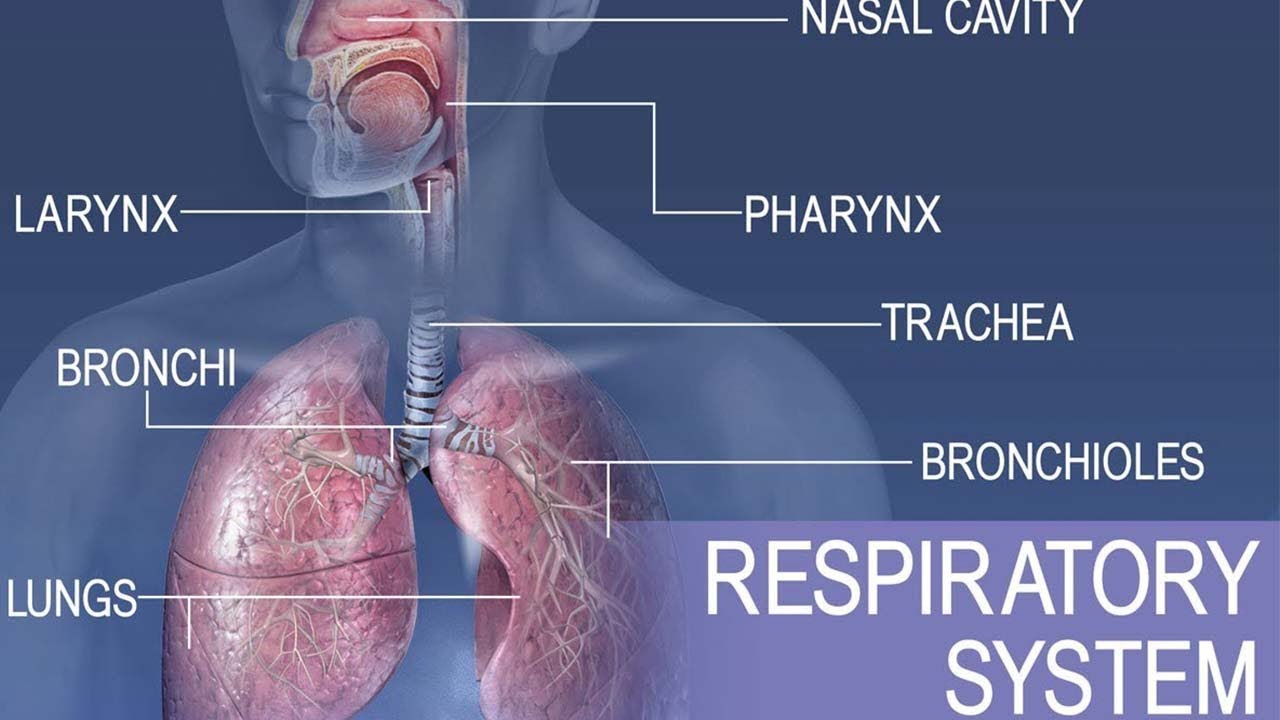Physiology of Coughing
Summary
TLDRThis video explores the physiology of coughing, explaining how the respiratory system and neural pathways work together to trigger this protective reflex. It covers the anatomy of the trachea and bronchi, the role of sensory nerves, and the three phases of a cough—inspiratory, compression, and expiratory. The video also highlights different types of coughs, such as barking, honking, and wet coughs, and their connection to various health conditions. Additionally, it touches on how voluntary coughing can be controlled by higher brain centers, providing a comprehensive understanding of this vital reflex.
Takeaways
- 😀 Coughing is defined as a short, explosive expulsion of air from the respiratory system.
- 😀 The anatomy involved in coughing includes the mucosa layer, goblet cells producing mucus, and ciliated epithelial cells in the respiratory tract.
- 😀 Below the mucosa, the submucosa contains immune cells, such as mast cells, which are involved in defense and allergic responses.
- 😀 The trachea contains cartilage, which provides structural support to the respiratory system.
- 😀 Sensory nerve fibers, including Ras, SS, and C fibers, are part of the vagus nerve and bring sensory information from the respiratory tract to the medulla.
- 😀 Various triggers, including chemicals (e.g., cytokines, histamine) and mechanical factors (e.g., foreign bodies), can initiate the coughing reflex.
- 😀 The vagus nerve transmits sensory information to the NTS (nucleus tractus solitarius) in the medulla, initiating the cough reflex.
- 😀 The efferent nerves, including the phrenic nerve, recurrent laryngeal nerve, and vagus nerve, transmit signals to the muscles involved in coughing.
- 😀 There are three phases in a cough reflex: inspiratory, compression, and expiratory, each contributing to the forceful expulsion of air.
- 😀 Different types of coughs, such as barking, honking, and paroxysmal, can indicate specific conditions like psychogenic causes, asthma, or bronchitis.
- 😀 Voluntary coughing, controlled by higher brain centers, can also be triggered consciously as part of a learned or controlled response.
Q & A
What is the definition of a cough as discussed in the video?
-A cough is defined as a short, explosive expulsion of air from the lungs.
What are the key anatomical components of the respiratory tract involved in coughing?
-The key anatomical components include the mucosa layer (which contains goblet cells producing mucus), pseudo-stratified columnar epithelial cells, basement membrane, smooth muscle, submucosa (with immune cells like mast cells), cartilage, and nerves like the vagus nerve.
How do the sensory nerve fibers in the respiratory tract contribute to the cough reflex?
-Sensory nerve fibers in the respiratory tract, including rapidly adapting and slowly adapting mechanoreceptors, detect chemical or mechanical stimuli. These fibers send sensory information through the vagus nerve to the medulla, triggering the cough reflex.
What are the chemicals and mechanical factors that can trigger the cough reflex?
-Chemicals such as cytokines, LTD4, leukotrienes, and histamine, as well as mechanical factors like foreign bodies or growths (e.g., cancer), can trigger sensory nerve fibers that initiate the cough reflex.
Which area of the brain processes the sensory information that leads to coughing?
-The sensory information is processed in the medulla, specifically in an area called the NTS (Nucleus Tractus Solitarius).
What are the three main phases of the cough reflex?
-The three main phases are: 1) the inspiratory phase, where a deep breath is taken, stretching the expiratory muscles; 2) the compression phase, where the glottis closes and respiratory muscles contract to increase lung pressure; and 3) the expiratory phase, where the glottis opens and air is expelled under high pressure.
How does the inspiratory phase contribute to the cough reflex?
-In the inspiratory phase, a deep breath is taken, which stretches the expiratory muscles and increases pressure inside the lungs, setting up the subsequent phases of the cough reflex.
What is the function of the glottis during the cough reflex?
-The glottis closes during the compression phase, trapping air and increasing pressure in the lungs. It then opens during the expiratory phase, allowing the high-pressure air to be expelled forcefully.
What are some of the different types of cough mentioned in the video, and what do they indicate?
-Different types of cough include barking cough (which may indicate a habitual cough), honking cough (often psychogenic), paroxysmal cough (linked to conditions like asthma or bronchitis), and wet cough (associated with lung diseases). Voluntary coughs are also possible, originating from higher brain centers.
How does a voluntary cough differ from an involuntary cough?
-A voluntary cough is consciously triggered by signals sent from higher brain centers, whereas an involuntary cough is reflexively initiated by sensory information processed through the vagus nerve and medulla.
Outlines

هذا القسم متوفر فقط للمشتركين. يرجى الترقية للوصول إلى هذه الميزة.
قم بالترقية الآنMindmap

هذا القسم متوفر فقط للمشتركين. يرجى الترقية للوصول إلى هذه الميزة.
قم بالترقية الآنKeywords

هذا القسم متوفر فقط للمشتركين. يرجى الترقية للوصول إلى هذه الميزة.
قم بالترقية الآنHighlights

هذا القسم متوفر فقط للمشتركين. يرجى الترقية للوصول إلى هذه الميزة.
قم بالترقية الآنTranscripts

هذا القسم متوفر فقط للمشتركين. يرجى الترقية للوصول إلى هذه الميزة.
قم بالترقية الآنتصفح المزيد من مقاطع الفيديو ذات الصلة

Peripheral Nervous System: Crash Course Anatomy & Physiology #12

Aula: Neurofisiologia - Reflexos Medulares e Tônus Esquelético | Neurofisiologia Humana

What is the Stretch Reflex or Myotatic Reflex?

Anatomy and physiology of Respiratory system

Why Our Brains Want to Be Addicted | The Chemistry of Addiction

C3.1 Nervous System Integration [IB Biology SL/HL]
5.0 / 5 (0 votes)
